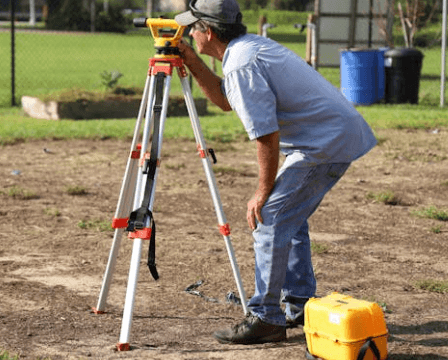Did you know that purchasing land without a survey could put you at risk of legal disputes or unexpected costs? Studies reveal that nearly 29% of property buyers face boundary issues due to a lack of proper land surveys. When buying land without a survey, you may also uncover hidden issues, such as easements, zoning violations, or unrecorded encroachments, that could derail your plans. Renowned real estate investors and cash land buyers Steve Daria and Joleigh emphasize the importance of careful due diligence to avoid these pitfalls. With years of experience, they’ve helped countless buyers make informed decisions, even in cases where surveys weren’t conducted. If you’re considering buying land without a survey, understanding the risks and getting expert advice is essential. Don’t leave anything to chance—book a free discussion with Steve Daria and Joleigh today to explore smarter ways to safeguard your investment. Your opportunity to buy confidently starts with the right guidance.
Key Points
- Understand the Risks of Boundary Disputes: Without a survey, you may not know the exact property boundaries, which can lead to conflicts with neighbors. This uncertainty could lead to costly legal disputes in the future.
- Identify Potential Easements and Restrictions: A survey usually reveals easements or restrictions on the land that you might otherwise miss. These could limit how you can use your property or allow others access to it.
- Be Aware of Undisclosed Encroachments: Buying land without a survey may mean you overlook structures, such as fences or driveways, that cross onto your property. These encroachments could complicate your ownership and cause future disputes.
- Verify Zoning and Land Use Compliance: A survey often ensures the property complies with local zoning and land use regulations. Without this confirmation, you risk purchasing land that doesn’t meet your intended purpose.
- Consult Experts Before Purchase: Skipping a survey? Consult local real estate experts or legal professionals for guidance. Their advice will help you make smart decisions and spot potential issues early.
What is a land survey, and why is it important?
A land survey is a precise map that defines a property’s boundaries and highlights its key features.
It clearly marks the property’s boundaries, helping to prevent confusion about land ownership.
Surveys also identify significant details, such as easements, rights-of-way, and any potential zoning restrictions.
This information is crucial, especially when building or making improvements on the land, as it is essential to ensure compliance with local regulations.

Skipping a survey can lead to costly disputes or complications in the future, such as encroachments on neighboring properties.
If you’re considering buying land without a survey, you may face risks such as hidden boundary issues or unforeseen legal problems.
A professional land survey provides peace of mind by clarifying property details upfront.
Always prioritize getting a survey to protect your investment and avoid unnecessary complications later on.
Get Started: Get Your Cash Offer Below…
We are direct land buyers. There are no commissions or fees and no obligation whatsoever. Start below by sharing where your property is and where we can send your offer…
What risks come with buying land without a survey?
Buying land without a survey introduces a range of serious risks that can lead to unexpected and costly issues.
Without a survey, you cannot be certain of the property’s exact boundaries, which can ignite bitter disputes with neighbors or neighboring properties.
There is a very real possibility of building structures on someone else’s land or, just as problematic, discovering encroachments where others have built on yours.
Unnoticed easements or rights of way might exist, making it difficult or even impossible for you to use certain parts of your land as you planned.
You could face frustrating zoning violations if you’re unaware of how the land is classified or if the property does not meet local regulations for your intended use.
Encumbrances, such as outstanding liens or unpaid taxes, may remain hidden, potentially passing on serious financial obligations to you as the new owner.
Securing a mortgage or financing can become complicated, as many lenders specifically require a recent land survey before approving your loan.
Additional costs may arise in the future due to legal battles, boundary corrections, or restrictions that you did not anticipate at the time of purchase.
To protect your investment, getting a professional land survey remains the smartest decision.
What should I look for on the land if I don’t have a survey?
- Boundary Markers: Begin by identifying obvious boundary markers, such as fences, stakes, flagging tape, or large rocks. These can give you a basic idea of where the property begins and ends, although they may not be entirely accurate or recognized by law.
- Encroachments: Notice if any parts of neighboring structures—like garages, sheds, or fences—appear to cross onto the land. Encroachments can lead to future legal battles or demand costly changes, making it crucial to check their presence.
- Access and Entry Points: When buying land without a survey, always confirm there’s a clear path to enter the land, whether it’s a private driveway, a shared road, or public street access. Inaccessible lots can be expensive or even impossible to use as planned.
- Utilities and Easements: Look around for visible utility lines, water pipes, or electrical boxes. Easements allow others to use part of your property, and failing to consider them when buying land without a survey can create future headaches.
- Land Zoning: Obtain zoning information from local offices to determine the permitted activities on the land. Buying in the wrong zoning area could hinder your plans, so familiarize yourself with the rules ahead of time.
Can title insurance protect me if I buy land without a survey?
Title insurance can offer some protection when buying land without a survey, but it has limitations.
It helps protect you against title defects, such as liens or ownership disputes, that could affect your ownership rights.
However, title insurance does not cover issues such as unclear property boundaries or encroachments, which a survey would typically reveal.
For example, if a neighbor’s fence crosses onto the land, title insurance won’t compensate for any related disputes.
Without a survey, you might also miss essential easements or rights of way that could impact how you use the property.
Title insurance is an important safeguard, but it works best when paired with a professional survey to address risks it doesn’t cover.
If you’re skipping the survey, carefully review the title policy to understand what it includes.
Pairing title insurance with your own due diligence will help you make a more informed purchase.
How can I estimate the costs of a professional survey?
- Check the Size of the Property: Larger pieces of land are more expensive to survey, as they require more time, effort, and specialized equipment. Smaller lots will likely cost less because the work required is less extensive.
- Consider Terrain and Location: When buying land without a survey, keep in mind that rough, hilly, or forested land usually means a higher survey cost due to the extra work involved. Surveyors may also add extra charges for properties located far from cities due to increased travel time or special challenges.
- Ask About Survey Type: There are several types of surveys, including boundary, topographic, and construction surveys, each with its own price. Choosing the right kind will make your budget more accurate and offer exactly what you need.
- Research State and Local Costs: Survey prices change depending on where you live, so always look up the average costs in your area first, especially if you’re buying land without a survey and want an accurate estimate. Urban properties may be pricier than those in the country, but rules and fees can vary significantly.
- Consult Multiple Surveyors: Reach out to several licensed surveyors and compare their offers, making sure their quotes include all potential costs and details. This will give you confidence in finding a trustworthy expert who matches your budget and expectations.

How can I document the condition and limits of my land purchase?
To document the condition and limits of your land purchase, start by taking detailed photographs of the property.
Capture key features like boundary markers, fences, trees, and structures, as well as any areas of concern like erosion or water drainage.
A property inspection is also a smart move to assess the land’s condition and identify any hidden issues.
If you’re buying land without a survey, you should thoroughly review any existing property records or title documents for details about boundaries and easements.
It’s a good idea to meet with neighbors to confirm shared boundaries and avoid disputes later.
Consider hiring a professional surveyor to formally mark property lines, especially if clear limits are not evident.
Documentation from local government offices, such as zoning records and permits, can also add clarity and legal security.
Keeping organized records of all correspondence and documentation will support your ownership claims.
For added peace of mind, consult a real estate attorney or expert to ensure that you’re fully informed.
Take action today by contacting licensed professionals to help you secure your investment and properly document your property.
**NOTICE: Please note that the content presented in this post is intended solely for informational and educational purposes. It should not be construed as legal or financial advice or relied upon as a replacement for consultation with a qualified attorney or CPA. For specific guidance on legal or financial matters, readers are encouraged to seek professional assistance from an attorney, CPA, or other appropriate professional regarding the subject matter.
